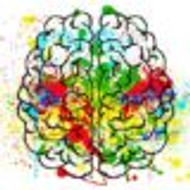Visual-Spatial Learners: Style & Characteristics
Posted by Brainspring on 13th Jun 2024
What is Visual Spatial Learning?
Individuals with dyslexia are often referred to as visual-spatial learners. A visual-spatial learner primarily stores and accesses information in picture form. Hands-on learning experiences can be highly beneficial for them.
Individuals who are visual-spatial learners are commonly:
- Visual thinkers: They think in pictures rather than words and may have a vivid imagination.
- Spatially aware: They are often good at reading maps, solving puzzles, and understanding complex diagrams.
- Innovative problem solvers: They can solve problems through mental manipulation of objects and are often creative, out-of-the-box thinkers.
- Intuitive: They may arrive at conclusions quickly due to their ability to see patterns and relationships.
For visual-spatial learners, mental imagery is crucial in comprehension and committing to memory. These learners excel when creating mental images of the concepts they try to understand. Visual-spatial learners can often grasp complex ideas quicker and retain information more effectively when information is presented visually, such as through graphs, charts, and illustrations.
Spatial reasoning allows these learners to comprehend the relationship between objects, a crucial part of their thought processes.
This capability is evident in activities such as:
- Reading and creating maps or blueprints
- Understanding geometric principles in mathematics
- Engaging in activities that require the manipulation of 3D objects, such as model-building or sculpture
Visual-spatial learners often exhibit advanced problem-solving skills, particularly when they can mentally manipulate objects. This mental manipulation enables them to envision different scenarios and outcomes, which is vital for fields requiring spatial thinking, such as architecture, engineering, and the visual arts. Their ability to think in dimensions helps them approach problems from various angles and develop innovative solutions.
Cognitive Development in Visual-Spatial Processing
As children grow, their cognitive abilities unfold in remarkable ways, often influenced by their innate learning preferences. A critical factor in cognitive development is visual-spatial intelligence, which can shape the way a child perceives, analyzes, and interacts with their environment. Visual-spatial learners, in particular, show unique advantages in processing visual information, which can significantly impact their educational experiences.
The concept of visual-spatial intelligence is deeply rooted in cognitive psychology and refers to the capacity to understand and remember the spatial relations among objects. Visual-spatial intelligence is central to how visual-spatial learners acquire knowledge, solve problems, and recall information. These individuals often excel in fields that require strong spatial abilities, such as architecture, engineering, and the arts.
A relationship exists between a child's development, education, and spatial abilities. Early educational interventions can enhance spatial reasoning, suggesting that an academic environment can be tailored to nurture and develop the visual-spatial intelligence of learners. It's not solely about teaching children what to learn but also how to learn in a way that best suits their cognitive predispositions.
- Active Engagement: Visual-spatial learners often benefit from educational activities that promote active engagement with spatial information, such as puzzles, building blocks, and drawing.
- Visualization Techniques: These learners may also develop more robust cognitive skills through visualization techniques, like imagining scenarios or mentally rotating objects, which improve their ability to process and retain information.
- Spatial Language: Using spatial language in teaching can enhance a child's understanding of spatial concepts, encouraging them to think and speak regarding location, distance, and orientation.
In recognizing the unique learning styles of visual-spatial learners, educators and parents can provide more targeted and practical support. When nurtured appropriately, visual-spatial intelligence can lead to significant cognitive advancements in children, setting the foundation for lifelong learning and problem-solving skills.
Visual Spatial Learning Tools & Resources
Visual-spatial learners thrive when information is presented in a graphic or picture format, and similar tools are indispensable for enhancing their learning process. Understanding and leveraging these tools can significantly impact the effectiveness of education for students with a visual learning preference.
Some essential tools that help the visual-spatial learning style are:
- Diagrams capture complex information in a simplified visual format.
- Graphs translate numerical data into visual representations, aiding in easier comprehension.
- Flow Charts create a roadmap to follow logical sequences.
The role of technology in education has also been huge for visual-spatial learners. Interactive whiteboards, digital textbooks with visual simulations, and educational software with engaging graphics can provide dynamic learning experiences that have changed the traditional classroom environment. This technologically-enhanced setting empowers visual learners to engage with content that mimics their cognitive preferences.
Embracing Visual-Spatial Learning
This exploration into visual-spatial learners' cognitive processes and learning styles sheds light on human cognition. The connection between the brain's hemispheres, characterized by distinct functions and processing styles, underscores the complexity of human thought and behavior.
Recognizing visual-spatial learning strengths and preferences opens opportunities for more tailored and effective educational approaches. By embracing active engagement, visualization techniques, and spatial language in teaching, educators and parents can empower visual-spatial learners to reach their full potential and nurture lifelong cognitive growth.
Leveraging visual-spatial learning tools and resources, from diagrams to digital simulations, paves the way for innovative and inclusive educational experiences that cater to diverse learning styles. Embracing the unique capabilities and preferences of visual-spatial learners adds to our collective understanding and adds to more inclusive education.
Georgia Diamantopoulos
Georgia is a tutor at Brainspring Learning Center in Shelby Township.
Eva Gyarmathy (2014) Dyslexia in the Digital Age: Difference, not Disability
